In the complex world of B2B marketing, understanding your audience is the cornerstone for driving business growth and fostering meaningful connections. It’s imperative to identify who needs your product or service and delve deep into the varying layers of their characteristics, needs, and behaviors.
This guide explores the nuanced distinctions and applications of Target Audience, Ideal Customer Profile (ICP), and Buyer Persona — three foundational elements that collectively form the backbone of successful B2B strategies.
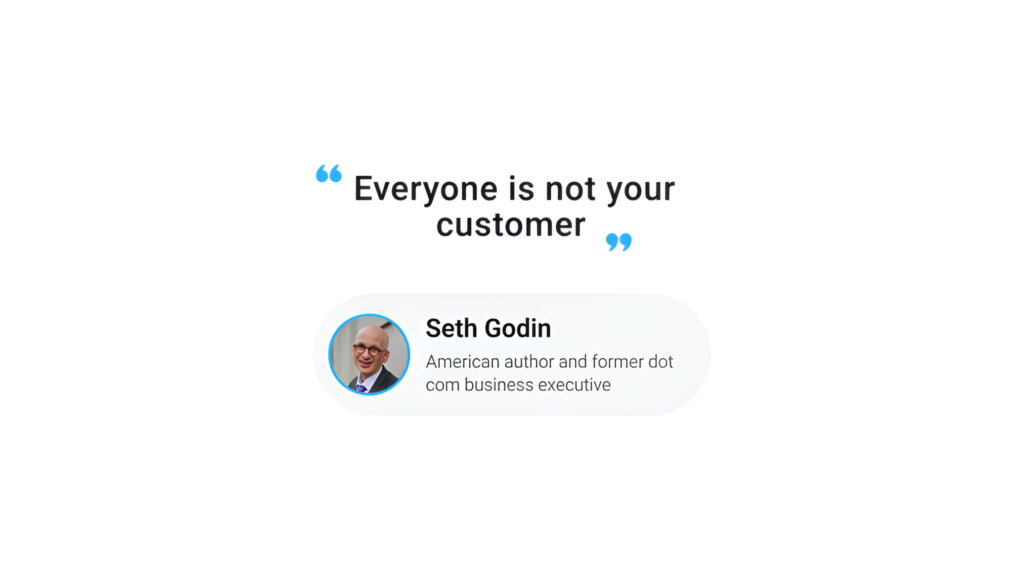
The Target Audience guides you to the broad spectrum of businesses that could benefit from your offerings. It lays down the preliminary layer, helping marketers discern the sectors and industries where their products are most relevant. The Ideal Customer Profile (ICP) dives a layer deeper, assisting businesses to determine the specific types of organizations that represent the most fruitful ground for their products or services, allowing for optimized resource allocation and enhanced lead prioritization.
Lastly, the Buyer Persona adds texture and depth to this knowledge by bringing detailed insights about the individuals within these organizations, offering a microscopic view of their needs, preferences, and decision-making processes.
Navigating through the interweaved layers of Target Audience, ICP, and Buyer Persona allows businesses to customize their approach, creating more resonant messages and solutions tailored to meet the unique needs of each entity and individual encountered in the B2B journey.
This comprehensive guide aims to provide a holistic view of these elements, offering insights and strategies to leverage each one effectively, ensuring your B2B endeavors are accurately aligned with market demands and customer aspirations. Let’s get started!
Key data and statistics:
- Buyer persona adoption: 90% companies using buyer personas have been able to create a clearer understanding of their customers (Source: Cintell).
- Improved arketing effectiveness: Companies that exceed lead and revenue goals are 3.2 times as likely to actively use personas (Source: ITSMA).
- Content strategy success: 71% of companies who exceed revenue and lead goals have documented personas (Source: Cintell).
- Impact on email campaigns: Using personas in email campaigns can increase open rates by up to 2x and clickthrough rates by 5x (Source: DemandGen Report).
- B2B decision makers: 77% of B2B marketing leaders say personas are critical to their content strategy (Source: MarketingProfs).
- Lead quality improvement: 56% of companies have created higher quality leads using buyer personas (Source: ITSMA).
- Alignment with customer needs: 93% of companies who exceed lead and revenue goals segment their database by buyer persona (Source: Cintell).
- Increased engagement: Website pages aligned with buyer personas see a 900% increase in visit duration (Source: MarketingSherpa).
- Better product alignment: 82% of companies using buyer personas have improved the value proposition of their products (Source: Gartner).
- Conversion rate optimization: Personalized calls-to-action (CTAs) targeted to personas result in a 42% higher conversion rate (Source: HubSpot).
- Sales efficiency: Sales teams that use buyer personas achieve 5-7% higher win rates (Source: Sales Benchmark Index).
- Marketing ROI: B2B marketers who use personas achieve 73% higher conversions from response to marketing qualified leads (Source: Aberdeen Research).
- Content personalization impact: 78% of consumers say personally relevant content increases their purchase intent (Source: Marketing Insider Group).
- Influence on buying process: 60% of the B2B buying process is completed before contacting sales, highlighting the need for targeted content (Source: Google).
- Improvement in customer understanding: 65% of businesses that updated their buyer personas within the last 6 months say they have a deeper understanding of their customers (Source: Cintell).
These stats collectively underscore the effectiveness of well-defined buyer personas and targeted marketing strategies in B2B contexts, emphasizing their role in lead generation, customer engagement, sales success, and overall marketing ROI.
Quickly Select the Right Tool for Your Needs:
UXPressia: Offers a user-friendly interface for creating detailed customer personas, journey maps, and impact maps. It’s particularly useful for visualizing customer interactions and experiences, helping businesses understand their audience’s needs and behaviors.
Xtensio: Provides a versatile platform for creating, managing, and sharing user personas and other living documents. Its user persona template is especially useful for crafting detailed, visually appealing personas.
SEMrush Persona Tool: Part of SEMrush’s comprehensive digital marketing suite, this tool helps create detailed buyer personas. It integrates seamlessly with broader SEO and marketing strategies, offering a holistic approach to audience understanding.
HubSpot’s Make My Persona Tool: A straightforward and intuitive tool that guides users through the process of creating buyer personas. It’s excellent for businesses seeking to better understand their target audience and tailor marketing efforts effectively.
SurveySparrow: Offers engaging and conversational surveys, making it easier to gather in-depth feedback from customers. Its user-friendly interface and diverse question types help in capturing nuanced insights about your audience.
Typeform: Known for its user-friendly interface and design-focused approach, Typeform makes creating appealing and interactive surveys simple. It’s great for engaging customers and gathering qualitative data.
Outgrow: Specializes in interactive content like quizzes, calculators, and assessments. This tool is excellent for engaging potential customers and generating leads through interactive, personalized content.
Survicate: A feedback collection tool that allows you to gather customer insights through surveys, polls, and feedback widgets. It’s useful for understanding customer preferences and improving user experience.
Why is B2B market sizing important?
B2B market sizing is crucial as it provides a foundational understanding of the potential demand within a given industry, enabling businesses to make informed strategic decisions. By assessing the number of potential customers, their spending capacity, and the overall revenue opportunity in the market, companies can align their product development, sales, and marketing strategies to the most lucrative segments, optimizing resource allocation and ROI.
Additionally, understanding market size allows companies to identify growth opportunities, assess competitive landscapes, manage risks effectively, and set realistic and achievable business objectives, contributing to sustained business growth and profitability.
 What exactly will it do for you:
What exactly will it do for you:
It is important to determine market size for numerous reasons. This is why.
💰 Enables businesses to calculate the potential earnings from a new product, service, or venture.
💼 Aids potential investors in making their investments.
🎯 Help craft an effective marketing strategy that prioritizes the needs and potential of your core market.
🔍 It provides a clearer view of the employment needs before launch.
📏 Your TAM, SAM, and SOM will become more apparent if you perform frequent market sizing.
How to calculate market size
To calculate market size, you begin by defining the total addressable market (TAM), which represents the maximum revenue opportunity for a product or service. This typically involves identifying the total number of potential customers and multiplying it by the average revenue per customer.
Then, to understand the realistically serviceable segment, you need to refine the Serviceable Addressable Market (SAM) by considering the segments of the market your product or service can reach. Further refining SAM by evaluating your company’s unique constraints and competitive landscape gives you the Serviceable Obtainable Market (SOM).
Understanding these three components—TAM, SAM, and SOM—helps develop accurate and effective business strategies and goals.
It’s crucial for entrepreneurs and companies in gauging market opportunities and attracting investors. However, TAM is a theoretical maximum, and businesses usually achieve a fraction of it due to various limitations and competitions.
What is total addressable market (TAM)?
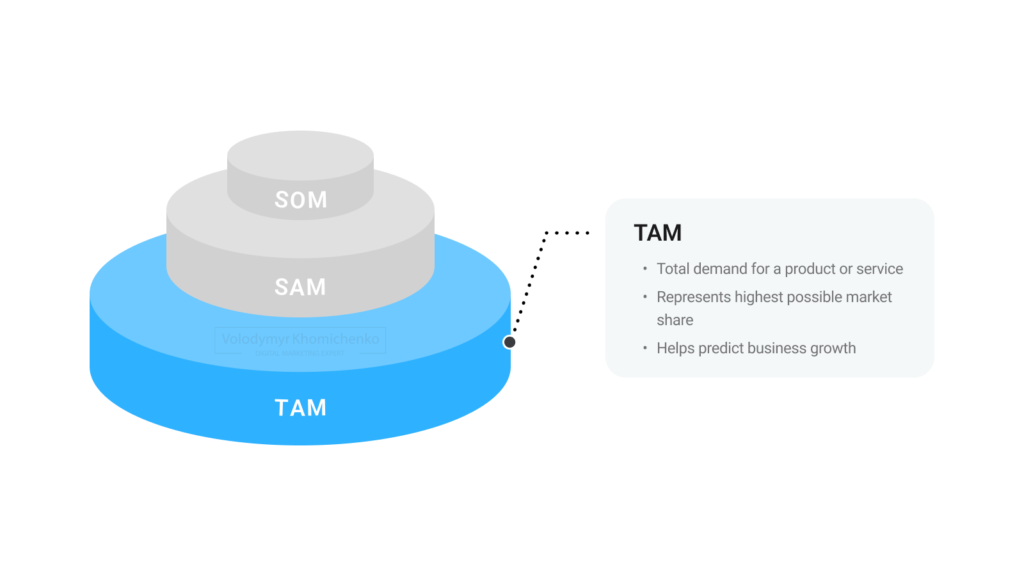
Total Addressable Market (TAM) represents the entire revenue opportunity available for a product or service, assuming universal market penetration. It provides a broad overview of the potential market size and is usually the starting point for any market analysis. Companies can gain insights into their products or services’ scalability and potential growth by calculating TAM.
It’s crucial for entrepreneurs and companies in gauging market opportunities and attracting investors. However, TAM is a theoretical maximum, and businesses usually achieve a fraction of it due to various limitations and competitions.
Total addressable market (TAM) calculation
How to calculate TAM (Total Addressable Market):
📝 # of customers in a market x annual value per customer 📝
- The number of accounts in a market comes from market research.
- Annual contract value comes from your company’s historical customer data.
Example: For a market of 3,000 customers at $2,500 ACV, the TAM would be $7,5M.
✒️ Note: A bottom-up industry analysis is a reliable way to calculate the total addressable market. This involves determining the total number of consumers in the market by dividing the market size by the average yearly income of each consumer.
Serviceable addressable market (SAM)

Serviceable Addressable Market (SAM) is a valuation used to define the portion of the total available market that a company’s products or services can serve. It is a subset of the Total Addressable Market (TAM) and is often more realistic and specific. Companies usually refine TAM by considering the constraints and opportunities related to their products, services, and geographical presence to calculate SAM.
Understanding SAM is crucial for companies to accurately estimate potential revenues and market shares and allocate resources effectively. This refined scope aids businesses in tailoring strategies and operational plans more closely to the opportunities available to them.
Serviceable addressable market (SAM) calculation
How to calculate SAM (Serviceable Addressable Market):
📝 Target segment of TAM x annual value per customer 📝
SAM is the percentage of the TAM that is a good fit for the products and services outlined in your business model.
Example: Only 6,000 of the 12,000 potential customers live in your business’s geographical area. With a $750 ACV, the SAM is $4.5M.
✒️ Note: Calculate your serviceable addressable market by multiplying the prospective customers by the average yearly revenue.
Serviceable obtainable market (SOM)

Serviceable Obtainable Market (SOM) is a calculation identifying the portion of the Serviceable Available Market (SAM) a company can reach. It is more refined and narrowed down compared to SAM, focusing on geographic locations, customer segments, and competitive landscape that a company can realistically serve.
By determining SOM, companies can allocate resources more efficiently and design more targeted business strategies. Startups and established companies must assess their SOM accurately to set realistic revenue targets and goals. A well-calculated SOM helps companies avoid overestimating market size and better align their product or service offerings with market demand.
➡️ There is a need for particular goods or services
➡️ Represents the expected audience size and position within the market
➡️ Helps predict immediate growth
Serviceable obtainable market (SOM) calculation
How to calculate SOM (Serviceable Obtainable Market):
📝 Last year’s market share x this year’s SAM 📝
To calculate last year’s market share, divide the previous year’s revenue by last year’s SAM.
Example: Last year’s SAM was $8M, and your revenue was $3M (37.5%). If this year’s SAM is $10M, multiply that by 0.375. This equals a SOM of $3.75M
✒️ Note: If your company is not yet generating revenue, it may be helpful to calculate the SOM from scratch. To do this, estimate the revenue your company can expect to make in the first year. Then, use these calculations to extrapolate the SOM.
To determine your market share from the previous year, divide your sales by the serviceable addressable market for your sector. This percentage represents your market share of the prior year. Next, multiply this percentage by your sector’s current year’s serviceable addressable market.
Why TAM, SAM, SOM matters
Understanding the Total Addressable Market (TAM), Serviceable Addressable Market (SAM), and Serviceable Obtainable Market (SOM) is crucial for businesses as it helps in strategic planning and identifying revenue opportunities within a market. TAM provides a broad overview of the total revenue opportunity available, allowing companies to understand the market potential and scale of investment needed.
By focusing on SAM, businesses can refine their approach and concentrate resources on the most accessible segments of the market, making operations more efficient and effective. The SOM further narrows the focus, enabling a company to set realistic targets and allocate resources to segments with a competitive advantage.
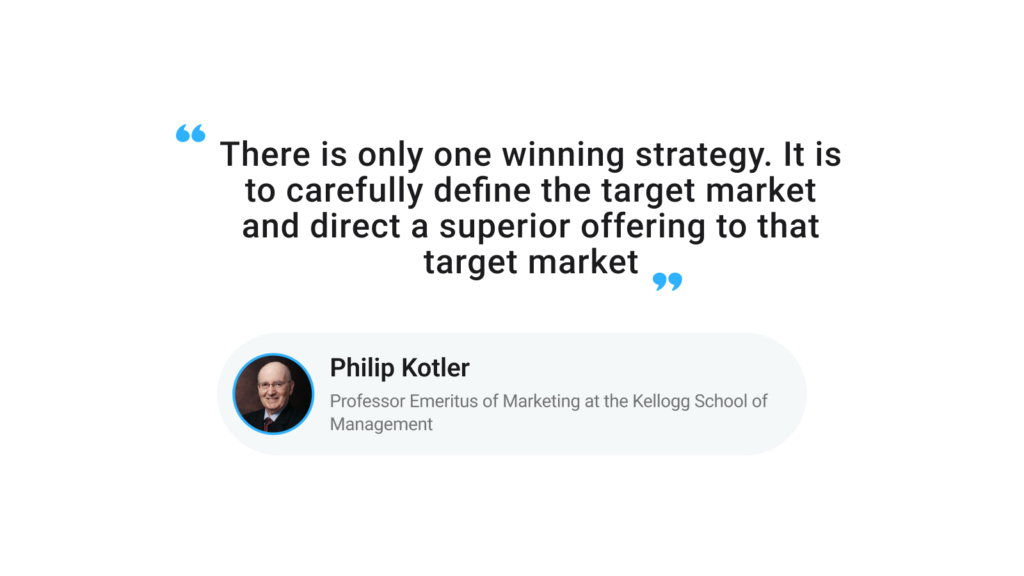
TAM, SAM, and SOM offer a hierarchical approach to market analysis, allowing businesses to balance ambition with realism and optimize resource allocation and strategic focus.
What’s an ideal customer profile (ICP) for B2B?
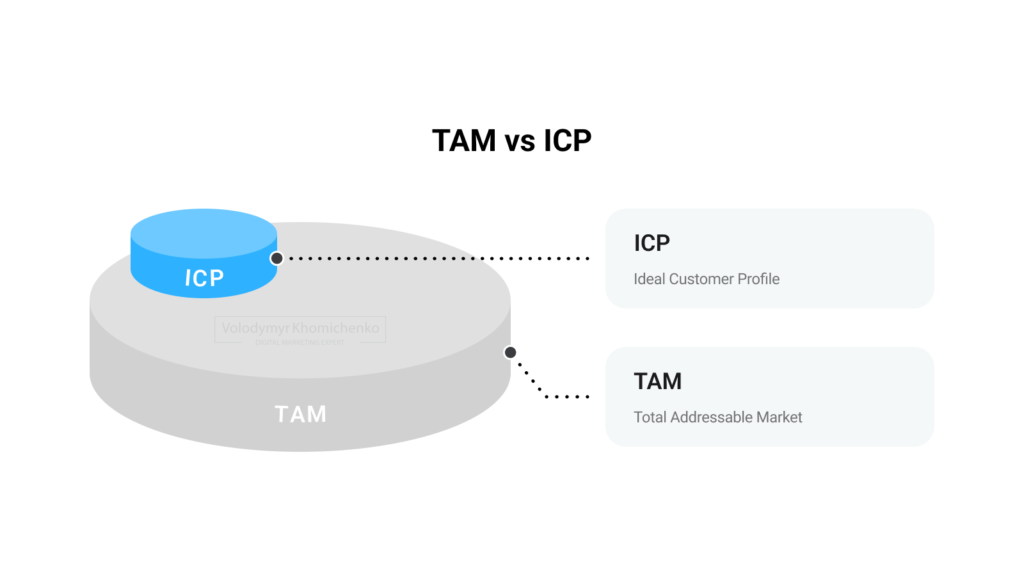
An Ideal Customer Profile (ICP) in the B2B context is a detailed and focused description of the archetype of the company that would gain the most value from a product or service and, therefore, is more likely to convert, remain a loyal client, and provide significant revenue or profit. The ICP is created using firmographic data, technographic data, and other relevant details about potential customer companies, such as industry, company size, revenue, location, technology stack, and organizational structure.
It goes beyond broad market segments to define the specific characteristics of companies that best fit a product or service, allowing businesses to focus their sales and marketing efforts more effectively, prioritize their resources optimally, and align their product development with market demands. Targeting companies that align with the ICP can increase conversion rates, reduce sales cycles, and improve customer satisfaction and retention.
Understanding the difference between your target audience, potential consumers, and your ICP is essential. I’m referring to a fantastic model by Myk Pono (Ideal Customer Profile (ICP): How To Create A Comprehensive Customer Profile) to understand it.
 Target audience
Target audience
This market segment represents your broader target market. All its members experience the same problems your solution is meant to address.
However, just because someone feels and experiences the same symptoms does not mean they all seek the same answer to their issue. In most cases, you can find various solutions to a problem
👉 Target audience = pain points
Potential customers
However, even if someone has similar problems, your solution will still work for them. Your target audience is divided into your potential customers. In addition to having identical pain points, they also fit a need for your product (pain points + fit).When your product or service checks the unique requirements and cases of the target market, your product’s value proposition is pertinent to them.
👉 Potential customers = pain points + fit
Ideal customer profile (ICP)
Your ICP, or ideal customer profile, combines Pain, Fit, and Readiness.
This indicates that your ICP is ready for a solution. They are aware of the problem (that you are attempting to solve with your product). Also, they feel that your product and method are relevant to them.
The ideal candidate for your ICP is aware of the problem and actively seeking a solution
Myk Pono
👉 ICP = pain + fit + readiness
How to create your ICP for B2B
Creating an Ideal Customer Profile (ICP) for B2B involves analyzing your current customer base to identify common characteristics of your most successful customers. This process requires defining firmographic and technographic details, such as industry, company size, and technology use, to find companies that can derive the most value from your product or service.
Understanding these companies’ specific needs, pain points, and preferences is vital to conducting thorough market research and customer interviews. Once validated with accurate market data, this detailed profile is a guideline for aligning marketing, sales, and product development strategies. Continually refining your ICP is crucial as market conditions, customer behaviors, and business goals evolve.
Identify your best customers
To create an Ideal Customer Profile (ICP), identify your best current clients and highlight what makes each company an excellent match. Keep in mind certain factors when making your list:
💎 Lifetime value (LTV) – Consider your customers with the highest LTV first.
🕰️ Average lifespan – The better, the longer they’ve been with you. However, your more recent clients may also be helpful if you’ve introduced features or released a new product.
👥 Retention rate – A higher-than-average retention rate demonstrates that this consumer is a good fit for you, just like a more extended lifespan.
📞 Net promoter score (NPS) – If they gave you a high rating on an NPS survey, it is wise to get in touch.
Or a long list:
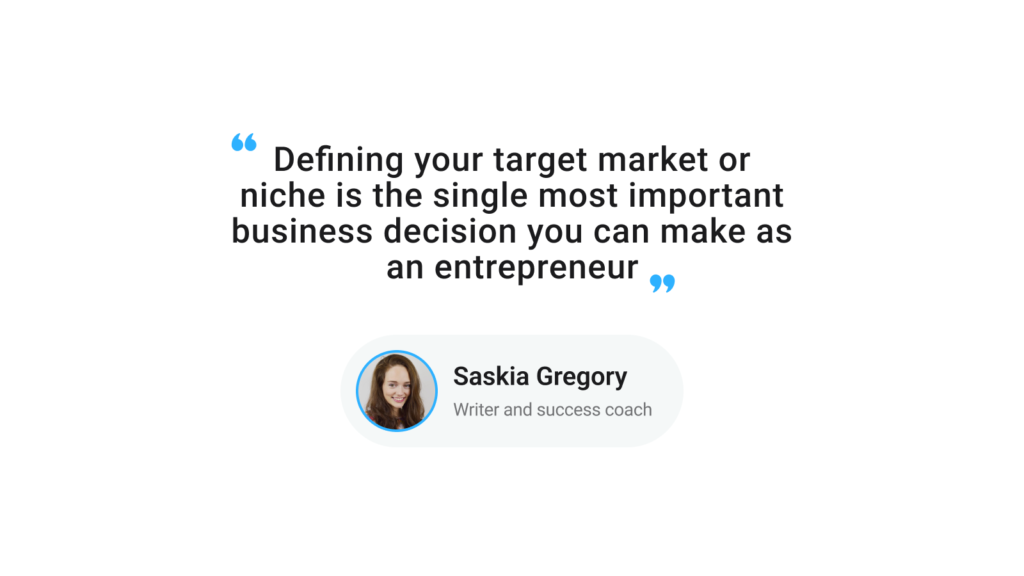
🏃♂️ Most active users
💼 Successful contract extensions or upsells
🌟 Most favorable Net Promoter Score (NPS)
💰 Annual contract value (ACV) and total contract value (TCV)
🔝 Highest sale value
📈 Most profitable accounts
🔄 Highest retention rate
⌛ Longest term with your company
🚀 Highest potential for growth
🌱 Highest health score of a customer
📣 Number of referrals
🛍️ Customers’ loyalty to your brand
🏆 Prominent brands: They provide your brand credibility and equity.
Pro tip: Also, consider clients who have offered insightful feedback or served as beta testers for your product.
Perform customer interviews
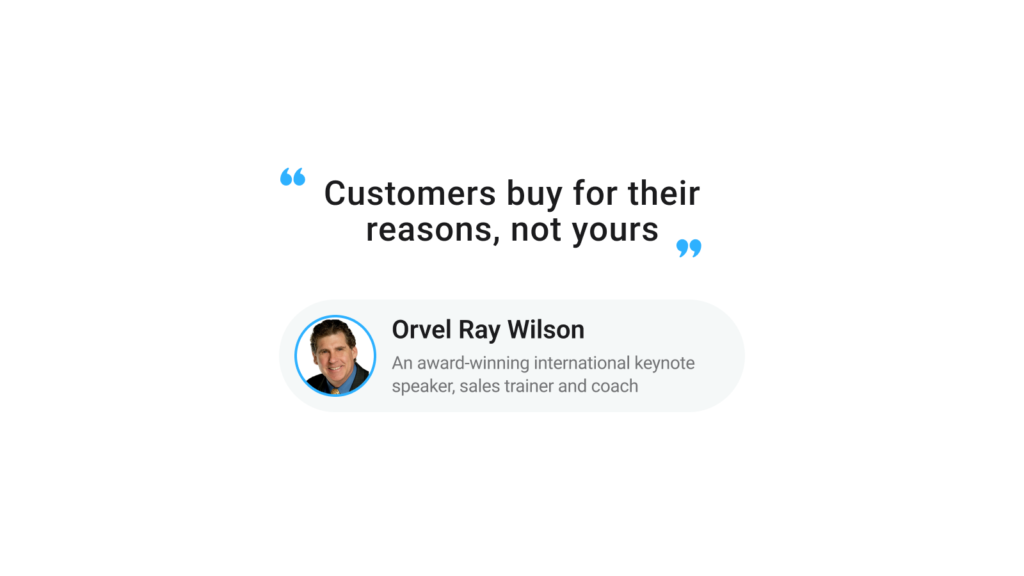
It is necessary to contact your clients to develop a valid ICP. Customer interviews one-on-one is the most effective technique to get this feedback. If necessary, a survey can be effective, especially if you have many consumers with low LTVs.
Questions you should ask
- How much research did you do before making a purchase? 🕵️♂️
- Did anyone else’s recommendations play a role in your purchase decision? 🧐
- How did you discover our brand or business? 📢
- Who makes the purchasing decisions at your company? 👔
- A buying committee was required to authorize the purchase? 📝
- Why did you initially decide to buy our product? 🤩
- What advantages come from utilizing our solution right now? 💪
- What are the main problems that your business has? 😓
- What was the main issue that needed to be resolved? ✅
- How does our solution address that issue? 🛠️
- What qualities do you seek in a [product or service] remedy? 🔍
- Which difficulties were you attempting to overcome? 🚀
- Why did you look for [your business name]? 💡
- How would you describe your purchasing procedure? 🤷♂️
- How do you look for answers? 💬
- How long does it typically take from the beginning to the purchase and implementation? ⚙️
- What elements impact your choice? 💥
- Which business goals were you expecting to accomplish with this solution? 🏆
- Have you already noticed any results? 🎉
Please ask to be as detailed as the client can.
Questions you should ask: Variant 2 (extended)
- What is the organization’s size? (As measured by revenue, the number of clients, staff members, etc.)
- How big is the concerned department?
- Do they generally hire leadership from outside the company or mainly promote people from within the organization?
- What is the main factor that would avert them from purchasing your product?
- What is the main factor that would influence them to choose to buy your product? What draws them to your offer, specifically?
- What do they hope to accomplish with your solution?
- How are they presently attempting to achieve this?
- What led them to choose to try this strategy? (How did you arrive at this decision? What factors did you consider?)
- What is the most significant drawback of their current strategy?
- What journals, blogs, or websites do they follow?
- What sort of tools or services do they use?
- Do they make use of LinkedIn? Which additional social media sites do they use?
- What principles do they keep, and how would you characterize their culture?
- What terminology do they employ when describing their good or service?
- What directories do they appear in?
- Do they prioritize minimizing risk or being innovative?
- Which trade shows or business gatherings do they go to?
- From what sources do they get their supplies?
- Are they aware of their problem but unable to identify a solution?
- Do they need to recognize the problem and be mindful of the enormous possibilities for improvement?
How to define ICP for a new company/project
If you do not have client data, you should start by making educated assumptions to define your Ideal Customer Profile (ICP). Conduct market research to understand your target customers’ potential needs, preferences, and behaviors, and examine competitors to identify who they are targeting and how they are positioning their offerings. Engaging in activities like surveys, interviews, and observations can also provide insights into prospective clients’ needs and preferences.
It’s essential to validate these assumptions over time, refine your ICP accordingly as you interact with real customers, and continuously update it based on actual data and feedback. This iterative approach will help create more effective and targeted marketing and sales strategies.
- Take a look at competitors’ list of best clients.
- Describe the unique and reasonable product characteristics.
- List the problems that your features help to solve.
- Describe use cases associated with competitors’ difficulties.
- Examine your industry with those particular difficulties and use cases.
- Identify 100 market leaders.
- Decide which classification characteristics are most useful for selling.
- Identify an audience that will benefit the most from using your service as the highest priority. It indicates that the solution addresses their top concerns.
- Select the desired qualities and research them from a list of potential companies. To save time and effort, consider using tools like GetProspect or Apollo to automate the data entry process. After exporting the list, these tools provide additional company information such as size, industry, and location.
- Create an ideal customer profile by identifying their shared characteristics.
How to use your ICP
In a B2B company, deploying an Ideal Customer Profile (ICP) in marketing can significantly enhance the precision and impact of your initiatives. Using the ICP, you can tailor your marketing messages and campaigns to resonate more profoundly with prospective customers, boosting engagement and conversion rates.
The ICP aids in identifying the most effective channels and tactics to reach your ideal customers, optimizing marketing spend and efforts. It enables the creation of more relevant and compelling content, addressing your target audience’s specific needs and pain points.
Here are a few ideas for use:
🎯 Targeted advertising. Use big data and AI to understand your audience and display targeted ads based on their website visits. Generate lead lists for your sales team using website traffic statistics.
📝 Content strategy. ICPs help customize marketing materials based on client needs and pain areas, delivering personalized content to potential customers through preferred communication channels.
💲 Personalized selling. Personalization is essential for effective digital selling. Creating customer profiles helps businesses gain insight into their goals and challenges, which can be used to customize emails and proposals for better results. This information should guide sales strategies.
📊 Lead scoring. To improve a marketing campaign’s success, prioritize leads by evaluating specific criteria using a checklist. Automate lead scoring by setting revenue or team size thresholds to save time and focus on other prospects.
💰 Pricing. Consider offering a monthly pricing model if your ideal clients stay with you for a while and if potential clients are startups or SMEs. Your pricing can be determined based on your profile blueprints.
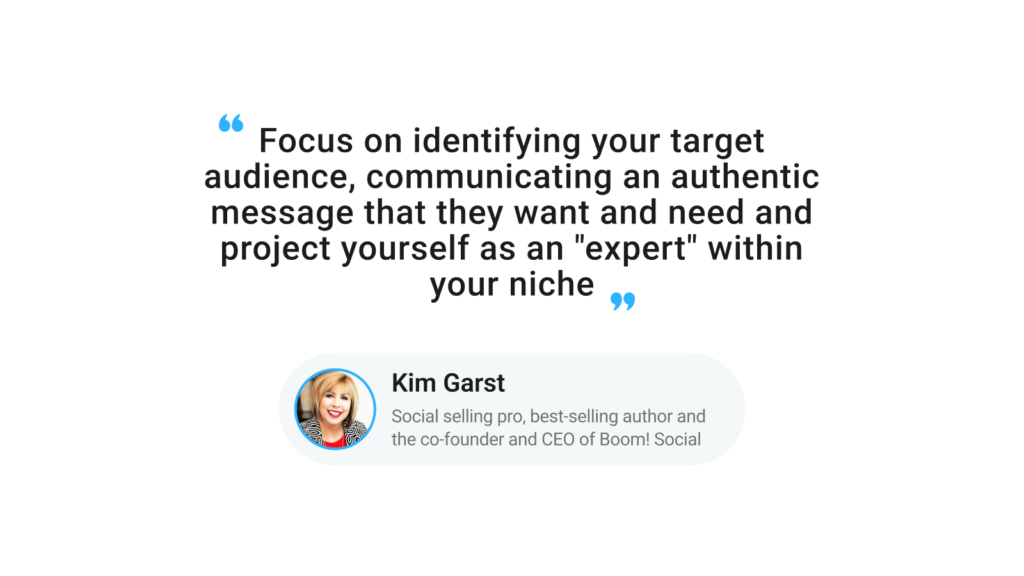 B2B Ideal customer profile vs. B2B buyer personas
B2B Ideal customer profile vs. B2B buyer personas
In a B2B context, an Ideal Customer Profile (ICP) and Buyer Personas serve distinct purposes, focusing on different aspects of the customer journey and sales process.
B2B Ideal customer profile (ICP)
An ICP in the B2B domain outlines the characteristics of an ideal customer company, providing a high-level view of the organizations that best fit a product or service. It includes firmographic details such as industry, company size, location, revenue, and the specific challenges and pain points the company aims to address. An ICP serves as a guideline to identify and prioritize potential leads and opportunities, enabling businesses to focus on prospects more likely to convert and bring value.
Consider some of the following traits when developing your ideal customer profile:
#️⃣ Budget and company size
#️⃣ Industry
#️⃣ Geographical area and target market
#️⃣ Business objectives and pain points
#️⃣ Status of funding and IPO
#️⃣ Technologies used
#️⃣ There may be many more (this list is incomplete).
B2B Buyer Personas
On the other hand, B2B buyer personas provide detailed and nuanced representations of the individual roles within the target companies involved in the decision-making process. Buyer personas go beyond the organizational level, detailing the specific needs, preferences, motivations, goals, and challenges of decision-makers, influencers, and other stakeholders.
These personas help businesses tailor their messaging, content, product development, and sales strategies to resonate with and address the concerns of various individuals involved in purchasing.

As you develop your buyer personas, you want to learn more about your clients within each account. Take into account factors like:

📊 Demographics in the workplace
👩💼 Job names and occupations
🛒 Purchase patterns and behavior
🎯 Department/role goals
📝 KPIs
😩 Difficulties and annoyances
Distinction
In essence, while the ICP helps target the right organizations and align business offerings with market demands, B2B buyer personas aid in fine-tuning marketing and sales approaches to connect with the individuals within those organizations effectively. Balancing and integrating insights from ICP and buyer personas are crucial for constructing coherent and efficient B2B strategies.
Quick round-up: Your buyer personas use market data and information about your customers to analyze those who buy from you. Your ideal customer profile examines the type of organization you want to sell to.
Who are the decision-makers in a company
Here is a quick reference guide for locating buyer personas regarding company size.
| Employees | Decision Maker |
|---|---|
| 0-10 | Aside from situations where they (CFO, CBDO, CTO) are partners in your industry, CEO |
| 10-50 | Vice President of the department (Design, Marketing, Business Development) that will benefit from the product |
| 50-500 | Specialized VP (Outbound Sales, Sales Operations, Sales Enablement) |
| 500 | Regionally focused VP (France X, China X) |
Types of buyer personas
When creating B2B buyer personas, it’s vital to consider the various organizational roles and influences that can impact purchasing decisions. Different types of B2B buyer personas typically include:
Decision-Maker Persona: This persona represents the individuals with the final say in purchasing decisions, usually focusing on strategic value, ROI, and alignment with overall business goals. Understanding their priorities and concerns is essential to tailor your value proposition effectively.
Influencer Persona: The influencer persona represents individuals who may not have purchasing power but significantly impact the buying decision, often providing insights, recommendations, or approvals. Understanding their needs and preferences is crucial for crafting persuasive messages and content.
Economic Buyer Persona: This persona is concerned with the financial aspects of purchasing decisions, focusing on budget, cost, and economic justification. Addressing their concerns about price, value, and ROI is vital to move deals forward.
End-User Persona: End-user personas represent the individuals who will directly use the product or service. Understanding their daily tasks, challenges, and needs is essential to demonstrate usability, practicality, and the benefits of your offering.
Gatekeeper Persona: Gatekeeper personas control access to other stakeholders and decision-makers, and understanding their criteria and concerns can help gain access to key individuals within the organization.
Champion Persona: The champion persona is typically an enthusiastic supporter of your product or solution within the prospective customer’s organization. Identifying and empowering champions can influence other stakeholders and facilitate the buying process.
Technical Buyer Persona: This persona evaluates the technical aspects and integrations of your product or service. Addressing their compatibility, security, and functionality concerns is crucial for their approval.
 By acknowledging and addressing these different buyer personas’ diverse needs, concerns, and preferences, B2B companies can more effectively tailor their marketing, sales, and product development strategies to resonate with prospective customers and facilitate the buying process.
By acknowledging and addressing these different buyer personas’ diverse needs, concerns, and preferences, B2B companies can more effectively tailor their marketing, sales, and product development strategies to resonate with prospective customers and facilitate the buying process.
Three other essential types:
👤 Primary buyer persona
A primary buyer persona represents the main target audience or the ideal customer whose needs and preferences align with a company’s product or service offerings. This persona typically has the most significant influence on the purchase decision and is considered the critical focus for marketing and sales efforts. By understanding and addressing the specific needs, challenges, and goals of the primary buyer persona, companies can optimize their strategies to drive engagement, conversions, and customer satisfaction.
😊 Secondary buyer persona
A secondary buyer persona represents an additional, valuable segment of a business’s target audience whose needs are also essential but may not be the central focus of a product or service. While not the primary target, secondary personas still significantly influence purchasing decisions directly or indirectly. Understanding and addressing the needs and preferences of secondary buyer personas allow businesses to expand their reach, diversify their customer base, and optimize overall market success.
😡 Negative buyer persona
A negative buyer persona represents the profile of individuals or entities a company identifies as non-ideal customers, usually because their needs and preferences do not align with the product or service offerings. Recognizing negative personas helps businesses refine their marketing strategies, allowing them to focus resources and efforts on prospects with the highest conversion potential. By doing so, companies can avoid spending time and resources on leads that are unlikely to convert or may prove unprofitable in the long run.
How to create a buyer persona: a 4-step playbook
Creating a B2B buyer persona involves several steps, each requiring careful consideration and research to ensure accuracy and relevance. Here is a concise 4-step playbook to craft a compelling B2B buyer persona:
Step 1: Comprehensive Research
Conduct thorough research to understand the characteristics, needs, and behaviors of your target companies and individuals. Analyze firmographic data, such as industry, company size, and revenue. Leverage insights from market research, industry reports, CRM data, stakeholder interviews, and surveys to gather detailed information about target companies’ decision-makers, influencers, and end-users.
- Collect Firmographic Data: Gather information about company size, industry, location, and revenue.
- Analyze Stakeholder Roles: Understand the roles and influence of various stakeholders in the buying process.
- Gather Behavioral Data: Study target companies’ interactions, content preferences, and engagement patterns.
- Conduct Stakeholder Interviews and Surveys: Directly gather insights from target companies’ decision-makers, influencers, and end-users.
- Study Industry Reports and Market Research: Analyze trends, demands, and challenges within the target industry or market.
Step 2: Audience Segmentation
Once you have gathered sufficient data, segment your audience based on common characteristics, behaviors, and needs. Identify the key stakeholders involved in the purchasing decisions within each segment, including decision-makers, influencers, and end-users. Understanding these stakeholders’ diverse roles and influence levels is crucial in developing nuanced and compelling personas.
- Identify Key Segments: Segment companies based on common characteristics, needs, and behaviors.
- Recognize Decision-Makers and Influencers: Identify individuals significantly influencing purchasing decisions within each segment.
Step 3: Detailed Persona Development
For each segment and stakeholder identified, create detailed personas. Assign each persona a descriptive name and document specific details, such as roles, goals, challenges, preferences, motivations, and content consumption habits. Detail the organizational goals and challenges of the companies they represent and identify the stakeholders’ individual needs, preferences, and pain points.
- Create Detailed Personas: For each identified individual and company type, develop detailed personas outlining specific characteristics, goals, challenges, and preferences.
- Define Organizational Goals and Challenges: Understand target companies’ objectives and pain points.
- Detail Individual Needs and Motivations: Identify the specific needs, motivations, and challenges of decision-makers and influencers within target companies.
- Outline Content and Communication Preferences:Determine each persona’s preferred content types, information sources, and communication channels.
Step 4: Implementation and Improvement
Utilize the developed personas to tailor your marketing strategies, sales approaches, and product/service offerings to meet your target audience’s needs and preferences. Regularly revisit and refine your personas based on new data, market changes, and feedback to ensure they remain accurate, relevant, and effective in guiding your B2B strategies.
- Tailor Marketing Strategies: Adjust content, messaging, and channels to align with the preferences and needs of each persona.
- Optimize Sales Approaches: Develop sales pitches and strategies that address each persona’s specific needs and objections.
- Refine Product and Service Offerings: Use persona insights to tailor products and services to meet the needs of target companies and individuals.
- Regularly Update and Refine Personas: Continually refine your personas based on new insights, feedback, and changes in the market or industry.
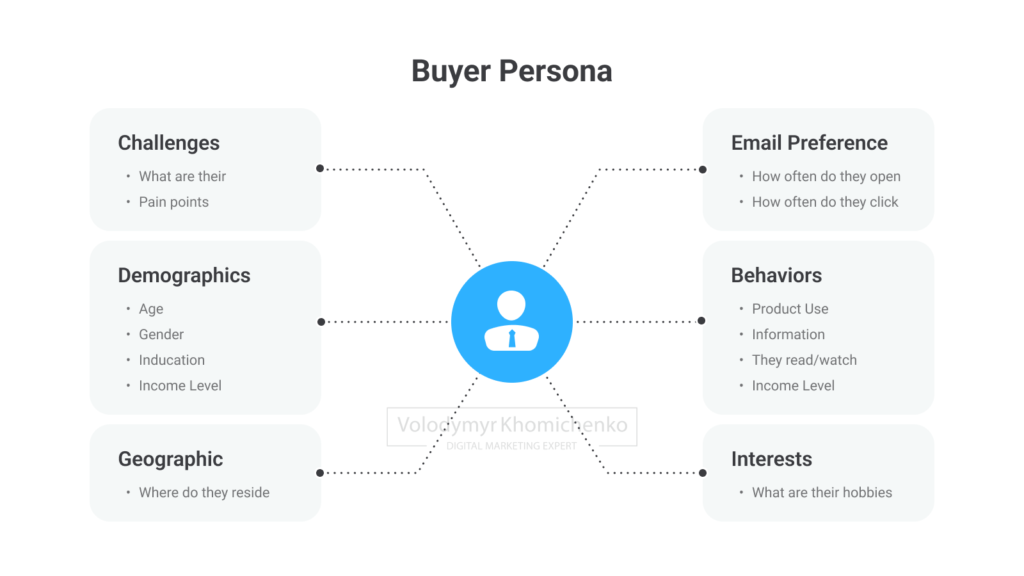
By meticulously following these steps, you’ll create B2B buyer personas that provide valuable insights, enabling the alignment of your business strategies with the needs and preferences of your target companies and the key stakeholders within them.
Tools to help you create a B2B buyer persona
Make my Persona by HubSpot
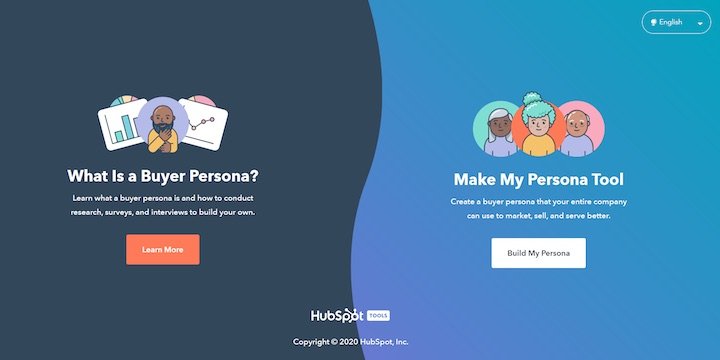
This user-friendly web application facilitates the development of buyer personas for businesses. The tool is designed to help you identify the traits of your ideal consumer by asking a series of questions. Each question is crafted to gather comprehensive data that will aid in creating your buyer persona. Once you’ve answered all the questions, the tool will generate a personalized persona sheet that provides detailed information about your target audience.
The Make My Persona tool has two options: one for gathering information and another for organizing it. Completing seven steps will create a unique buyer profile. Each phase focuses on a specific aspect of understanding the buyer persona.
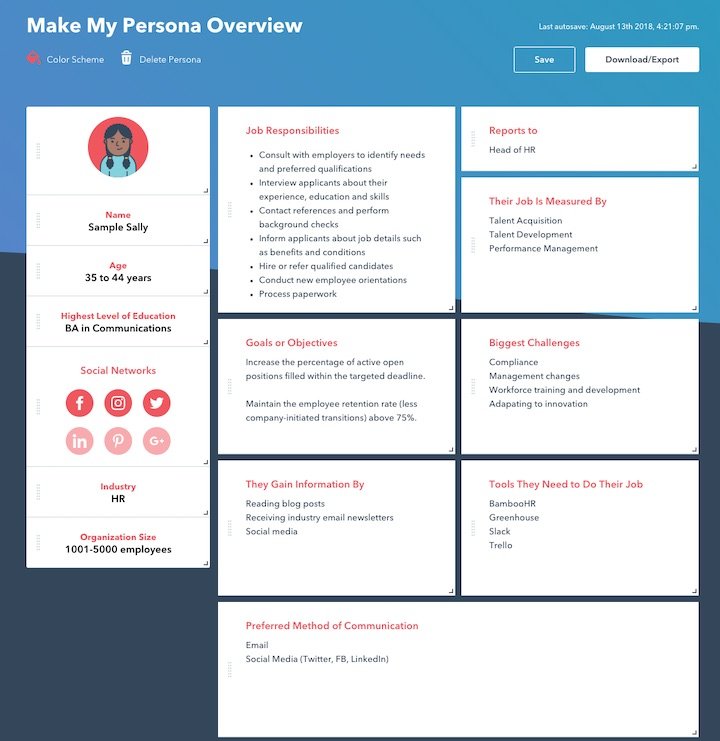
You have reached the persona document editor after completing the walkthrough and answering some questions. Here, you can make changes to your identity document that align with your company’s needs. The document includes various traits such as age, education level, work title, designation, interests, obstacles faced, reporting structure, and preferred sources of information.
Once you have finalized your document, you can download it and share it with different departments within your organization. HubSpot offers numerous free resources, including the buyer persona tool, to help you with your buyer persona plans.
SEMrush
To create accurate buyer personas, SEMrush’s template requests various information from different sources, including demographic factors. This includes data from current customer profiles, primary research using web tools, secondary research, and analytics dashboards.
The template also requires information about job descriptions, duties, and the sector of each person. Additionally, gathering visitors’ personal and professional values and aspirations is vital.

This template uses market and competition research data and the decision-making process to understand potential clients better. Each piece of information added helps to reveal the identity of the client. The SEMrush buyer persona template considers over 20 factors to identify customer personas for your brand accurately.
Xtensio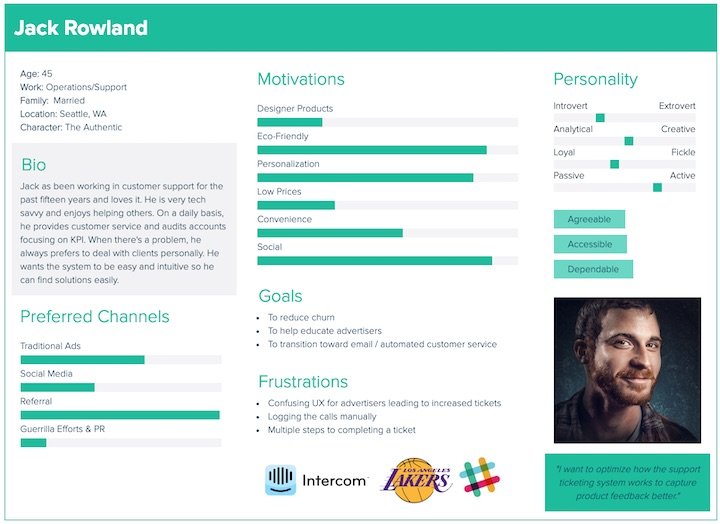
Creating a user persona and comparing it with others is now possible without learning any coding. Xtensio, with its templates, simplifies the entire process for you. It is an excellent choice for a persona builder program that can handle large amounts of data and facilitates seamless team communication. With Xtensio, team members are motivated to take ownership and work efficiently. It ensures that critical data is regularly reviewed to provide context.
With the free version of Xtensio, you can create up to five personas while accessing all their software tools and modules. Their website lists various use cases, such as improving client relations, enhancing marketing strategies, increasing sales, bettering communication, establishing brand identity, and launching new products.
UXPressia
In addition to producing personas, it facilitates the development of impact and customer journey maps. You can even construct a buyer persona using the tool’s free version.Some of the most crucial questions used to create buyer personas are included in the persona template you can obtain on its website. You may easily do that if you want to add new questions or change the ones already on the template.
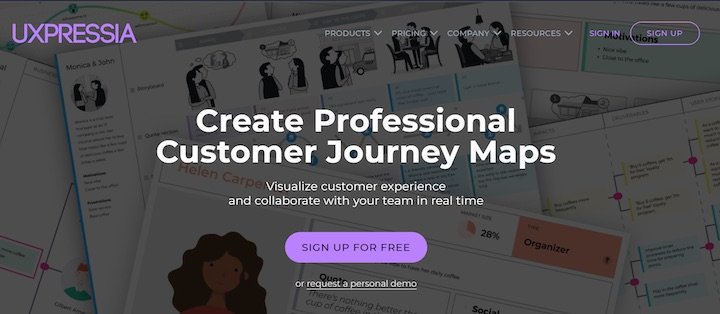
Four different persona templates are available for you—sophisticated customization tools and various other components. Real-time collaboration with all of your stakeholders is possible.You can even use color coding to make certain traits easier to identify. Comparing client profiles makes it easier to see variations in their behavior patterns.

Image via UXPressia
You can even generate names and images using UXPressia, saving you much time. For the former, it helps with words that sound natural, and for the latter, it fosters empathy by offering a suitable photo based on the situation.
Offer an omnichannel experience, leveraging over 50 channels to connect with your customers. You may visually show the distinctions between personas with editable sliders..
Improving your existing B2B buyer persona
Refining an existing B2B buyer persona involves continuously updating it with insights from ongoing customer interactions and market research to keep pace with evolving buyer needs and preferences. Engaging with customers through varied channels can offer nuanced insights into their changing goals and pain points, allowing for more relevant andresonant marketing strategies.
This continuous improvement ensures that marketing and sales efforts are always aligned with the current needs and behaviors of the target audience, enhancing the effectiveness of outreach and engagement strategies.
Three strategies are listed below to strengthen your B2B buyer persona:
❇️ Use surveys during onboarding
Speaking with your customers is The most incredible way to enhance your buyer persona, just like when you established your initial persona.
A fantastic learning opportunity during the onboarding process is gathering feedback. You could ask these questions on a screen or via email during onboarding.
❇️ Use a churn survey
You can determine much about your clients (and your solution) by conducting a churn survey.Does your product, for instance, have a potent feature you know your target consumer would value but isn’t being used?
You can lower the likelihood of future churn by demonstrating to customers how to get even more value from your solution.
❇️ Feedback loop between sales, marketing, customer service, and product development
With a solid B2B buyer persona, your team won’t have to take any chances. To maintain a consistent buyer persona, departments must maintain a feedback loop.
TAM + ICP + personas = a B2B marketing arsenal
The TAM represents the number of potential accounts interested in purchasing your product. Meanwhile, the ICP is the percentage of your TAM that you need to convince to make a purchase. These definitions serve as both rules and living organisms when fully utilized. However, not all your paying customers will fit into this category, and not all prospects will meet the ICP or Buyer persona requirements.
Refining your “best fit” definition would be best based on changing objectives and circumstances. These may include your position in the market, metrics for measuring marketing and sales efficiency, and what you learn about your customers along the way. Well-defined and useful TAM, ICPs, and Buyer personas enable your teams to attract, convert, and win customers through repeatable and scalable procedures instead of relying on whims, instincts, and inconsistent goals. To make strategic progress, you must use all three
Conclusion
To achieve maximum marketing and sales success, precision targeting is essential for B2B businesses. This involves understanding and defining your Ideal Customer Profile (ICP), Total Addressable Market (TAM), and buyer personas. These factors are crucial in the dynamic B2B market, providing structure and guidance to attract and retain the right clients. By adopting a data-driven strategy and a commitment to ongoing development, precision targeting can help overcome B2B challenges and drive growth.
You can contact me, and I’d be happy to chat with you.
Questions You May Have
-
How can I ensure my buyer personas remain relevant over time?
To maintain relevance, regularly update your buyer personas with new data and insights. Utilize tools like SurveySparrow to gather ongoing feedback from your target audience. Additionally, monitor industry trends with SEMrush to keep your personas aligned with market shifts.
-
What’s the best way to gather data for creating an Ideal Customer Profile (ICP)?
Leveraging a CRM like HubSpot can be instrumental in collecting customer data and identifying trends. Combine this with industry-specific research using UXPressia to ensure your ICP is backed by solid data.
-
How often should I update my target audience analysis?
Target audience analysis should be an ongoing process, adjusted as market conditions change. Tools like Typeform can facilitate continuous collection of audience insights. Aim to review and refine your target audience at least bi-annually or as significant industry trends emerge.
-
Can I create buyer personas for different segments within the same industry?
Absolutely, different segments may have unique characteristics and pain points. Use Xtensio to create and manage distinct personas for each segment. This nuanced approach allows for more targeted and effective marketing strategies.
-
Is there a tool to help quantify the impact of using buyer personas on my marketing ROI?
For quantifying the impact, integrate analytics tools like Google Analytics with persona-based content strategies to track engagement and conversions. Outgrow provides interactive content that can directly engage with your personas, offering metrics to measure performance.
-
How do I align my content marketing with my buyer personas?
Use SEMrush to align content with the search behavior of your personas. Then, use Survicate to collect feedback on content effectiveness and refine your approach based on real user data.
-
What’s the first step in creating a buyer persona for a B2B company?
Start by collecting qualitative and quantitative data about your current clients. Tools like UXPressia can help visualize this information, while interviews and surveys via Typeform can enrich your data with personal insights.
-
Can I use buyer personas for improving customer service?
Definitely, personas can tailor customer service strategies to better meet client needs. Use insights from HubSpot CRM to personalize interactions and address concerns proactively, enhancing the overall customer experience.
Join my monthly newsletter
Start getting exclusive B2B marketing tips that I only share with email subscribers



![iTalki vs Preply: Which Platform Leads in 2024? [Promo codes Inside] iTalki VS Prely](https://khomichenko.com/wp-content/uploads/2023/12/image-7-770x515.png)